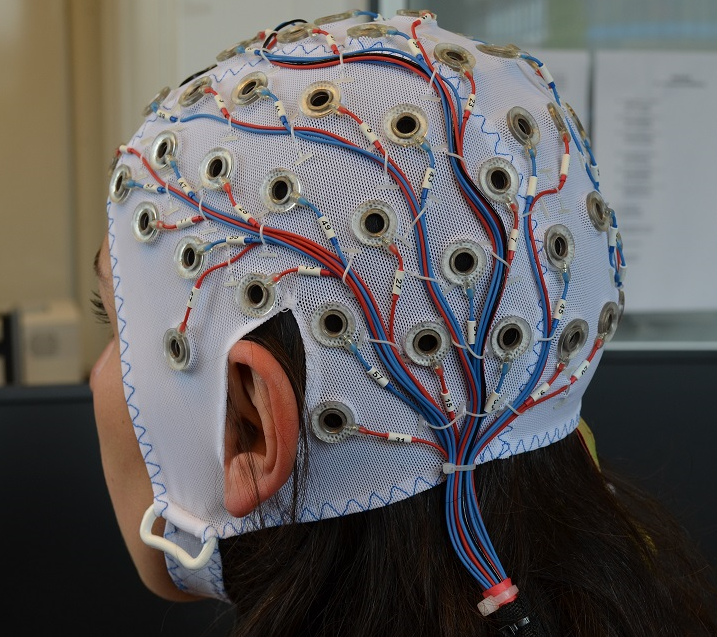Speech and music lab

Contact
head of the lab
address
Speech and Music Laboratory
FK III Linguistic and Cultural Studies
Carl von Ossietzky University
Ammerländer Heerstr. 114-118
26111 Oldenburg
Room: A6 2-201 & A6 2-202 (Campus Map)
Speech and music lab

The Language and Music Laboratory of the University of Oldenburg provides many methods for the experimental investigation of a wide variety of language and music research issues. Two of the methods used in our laboratory are briefly presented below.
EEG (electroencephalography)
In an EEG examination (EEG = electroencephalography), the electrical activity of the brain, which is caused by cognitive processes such as speech processing, is measured.
For an EEG examination, the test subject is fitted with a cap to which electrodes are  attached at certain positions. A washable gel is used to create a connection between the surface of the head and the electrodes. (Of course, study participants have the possibility to wash their hair after an experiment). Subsequently, the test participants hear or see words or sentences via loudspeakers or on a computer monitor. In most cases, this is associated with a task, such as deciding by mouse click whether or not a certain word occurred in a sentence heard. Meanwhile, a computer records the voltage fluctuations measured by the electrodes.
attached at certain positions. A washable gel is used to create a connection between the surface of the head and the electrodes. (Of course, study participants have the possibility to wash their hair after an experiment). Subsequently, the test participants hear or see words or sentences via loudspeakers or on a computer monitor. In most cases, this is associated with a task, such as deciding by mouse click whether or not a certain word occurred in a sentence heard. Meanwhile, a computer records the voltage fluctuations measured by the electrodes.
The following video shows an exemplary EEG investigation in our laboratory:
Eye tracking
A relatively new examination method used in the laboratory is eye tracking. An eye tracker records the eye movements of a test person while he is performing a certain task. The idea behind this technique is that the eyes look at the element being processed by the brain at that moment. Unlike the ERP method, eye tracking is a fairly easy method to use because it requires little preparation. The possibilities that an eyetracker offers when investigating speech processing are manifold. It is suitable for studies with children and adults and for studies with people with and without disabilities. It can be used for reading studies as well as for studies with auditory language material.
The following video shows an exemplary eye tracking study in our laboratory:
